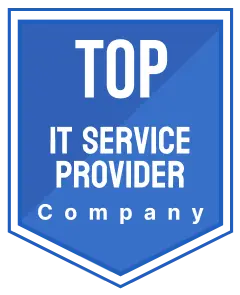
We provide continuous system monitoring, timely updates, and expert issue resolution, ensuring your digital platforms operate seamlessly with maximum uptime and minimal disruptions.
Pioneering customized web and mobile application development with a focus on excellence.

Global Clients
Successfully Projects
Years of Excellence
Client Retention





With expertise in almost every programming language, our 4,000+ team delivers dynamic solutions that align with modern business demands.
Node Js
React Js
Laravel
Python
Flutter
Java
Swift
Codeigniter
Artificial Intelligence
Machine Learning
Kotlin
React Native
When excellence matters, choose WebOConnect. We combine creativity and precision to deliver superior web and mobile solutions, tailored for your success.
Every partnership reflects the trust and confidence our clients place in us. Together, we create impactful solutions that inspire growth and pave the way for long-term success.
Healthcare
Finance
Retail & E-commerce
Education
Travel & Tourism
Real Estate
Media & Entertainment
Automotive
Lifestyle
Productivity
Beauty
Communication

In 2025, more European startups are making a strategic shift: they’re opting for dedicated developers from India instead of going the traditional freelance route. And no, it’s not just because of the time zone magic (though that helps). Whether you’re a scrappy founder in Berlin, a scale-up CTO in Amsterdam, or running your dev sprint from a co-working beach hut in Lisbon (you lucky human), here’s why hiring Indian developers is becoming the smartest move for your product roadmap and sanity. Let’s Start With the Elephant in the Zoom Room: Freelancers vs Dedicated Developers Freelancers are like tapas. These are great for a perfect one-time project, but for long-term commitment, these aren’t the ones. You can shift experimental features or mockup MVPs. But when deadlines start building up, you need Q&As, sprints, last-minute pivots, etc. That is where you need more than “someone on Fiverr with 4 stars and a Canva resume.” That’s where dedicated developers from India step in. You're not just hiring hands-on keyboards. You’re plugging into a system. A team. A tech culture that lives and breathes code, and does it cost-efficiently, reliably, and with an eye on scale. Indian developers vs freelancers is not just a price battle. It’s about ownership, reliability, and long-term thinking. 1. Consistency Is the New Currency Hiring Indian software developers for startups means you get developers who actually stick around. Unlike freelancers who sometimes vanish mid-sprint (usually after payment), dedicated teams have skin in the game. They follow your roadmap. They use your tools. They even remember why that weird edge case exists in your codebase. Plus, the offshore development model in India is built on long-term trust, not just gig-to-gig hopping. The developers are used to working in agile environments with global teams, which means fewer culture clashes and more productive stand-ups (with or without the morning espresso). 2. Cost-Effective (But Not “Cheap”) Let’s clear this up: offshore development in India doesn’t mean bargain-bin developers. What you’re really getting is cost-efficiency at scale. You can hire a full-stack developer with 5+ years of experience for the cost of a junior dev in Western Europe. But cost alone isn’t the main draw. It’s the value. You’re getting developers who are trained, fluent in English (and GitHub), and often certified in the latest frameworks, React, Next.js, Node, you name it. When you hire Indian developers, you see a wave of ambition, upskilling, and devs who genuinely care. 3. Time Zones That Work for You (Not Against You) You might assume a 4–5 hour time difference is a blocker. But ask any founder who’s worked with dedicated developers from India, and they’ll tell you: that it’s secretly an asset. Imagine waking up to progress reports. Bugs fixed while you slept. Features pushed during your evening wine break. This “follow-the-sun” workflow creates development momentum that freelancers (especially local ones juggling multiple clients) often can’t match. And unlike freelancers, dedicated developers actually show up to meetings, and take notes. 4. Scaling Is Easier With a Structured Partner Let’s say you’re building a fintech app. You start with one developer. Things go well. Now you need 3 more. Good luck getting that from a freelancer network where half the team is moonlighting or ghosting. With offshore development in India, you’re usually working with a development company that can scale your team quickly, without compromising quality. They’ve got pipelines, HR, tech leads, and onboarding processes already in place. And if someone rolls off? They handle it. Not you. That’s the beauty of dedicated developers, they’re part of an engine, not just a solo scooter in the gig economy. 5. Cultural Fit (And No, They Don’t Just Say “Yes” Anymore) European founders sometimes worry: “Will they challenge our ideas or just agree with everything?” Good news: Today’s Indian software developers for startups are collaborative, proactive, and (thankfully) increasingly vocal when they see inefficiencies. Indian dev culture has evolved. Engineers are encouraged to speak up, critique architecture, and contribute to product direction, not just write code. And let’s be honest, how many times has your freelance dev not told you about a shortcut they took? FAQs Q1: Isn't working with Indian developers risky in terms of communication? Nope. Most dedicated developers from India speak excellent English (often better than Dave from accounting). And unlike freelancers juggling multiple clients, they’re committed to your startup full-time, making communication smooth and focused. Q2: Can I start small? Or do I need to hire a full team? You can absolutely start with one or two Indian software developers for startups and scale as you go. Think of it as hiring one A-player, who happens to bring a quiet army behind them if needed. If you need to know the cost, use WebOConnect’s exclusive calculator to know the average cost in India. Q3: What about security and IP protection? Firms like WebOConnect, which offers offshore development in India, generally work with NDAs in secure environments and have international legal agreements in place. Our team has worked with startups based in Europe, the US, and beyond. We are not leading to any new territory. Your IP and copyrights are all secured. Q4: Will I have to micromanage everything? Not at all. You don’t need to micromanage the team you get from WebOConnect. With the right team structure (and a solid onboarding process), your dedicated Indian developers can operate autonomously, keep you updated, and thrive with innovation. Our developers are a resource you can rely on from us. We provide you with everything, from clear milestones to weekly progress reports. Q5: Freelancers Are Great. Until They’re Not. Let’s not bash freelancers. There’s a time and place for them, landing pages, one-off bug fixes, or that fancy pitch deck animation. But if you’re a startup with a real product, users, and pressure from investors? You need dedicated developers from India who are in it with you, not just popping in and out like it’s Tinder for tech projects. Final Word to the Wise Founder Choosing between Indian developers vs freelancers comes down to one question: “Do I want someone who codes with me or just for me?” In 2025, smart European startups are choosing the former. They're looking beyond the quick fix. They're building real tech, with real partners, and finding that India isn’t just a place to outsource, it’s a place to accelerate. So if you’ve been burned by the flaky freelancer who promised 100% availability but went radio silent after the deposit… maybe it’s time to go dedicated.
Read More
Where startups are taking over the world, agility, cost-efficiency, and access to the right tech talent are non-negotiable. There's a wave among European entrepreneurs of hiring Indian developers to build simpler, smarter, faster, and adaptable digital products. What began as a cost-saving tactic has transformed into a strategic business decision. Do you know with the aim to build a development team in India you can save at least 30% of cost including overheads and basic pay? No matter which niche you are interested in, from FinTech to Healthtech, software development outsourcing is the best aid. Let us understand in this article why Indian developers for startups are in high demand, the logic behind software development outsourcing, and how companies like WebOConnect are helping European ventures scale with precision and affordability. Why Are European Startups Hiring Developers from India? Europe’s startup ecosystem is growing, but so are the challenges. High developer salaries, talent shortages, and intense time-to-market pressure are pushing founders to look eastward. Here’s why India is the go-to tech destination: 1. Pre-vetted Indian Developer Every year, there are over 1.5 million engineers graduating. Out of this number, very few are hired by prominent brands due to lesser requirements in the country itself. Making it a perfect chance for companies in Europe to make an easy hire at affordable prices for highly-qualified and experienced experts. These engineers are well-versed in technology changes and new emerging areas, infusing AI and ML expertise to facilitate working and innovation. Hence, European startups are accelerating their growth with a strategy to hire developers from India with specific skill sets for real-time services. 2. Cost Advantage Without Compromise By outsourcing development tasks to India, European startups can save up to 60–70% on labor costs. But cost-saving isn’t the only benefit, it’s also about value. The return on investment is high when you hire developers from India who deliver enterprise-grade results. 3. Flexible Engagement Models With WebOConnect, you have the freedom to opt for any hiring model, whether you’re looking for a single remote developer or for building a full development team in India. The best part is no commitment, and startups can scale as much as they want by opting for any model they like. 4. Language Proficiency and Cultural Adaptability For hiring developers in India, language barriers are almost negligible, as 90% of the developers understand English and can communicate effectively. This fluency in English offers quick responses, fewer misunderstandings, and better output within timelines, making cross-border functionality seamless. Moreover, there is also an option to hire time zone-aligned Indian developers to collaborate in real time. Software Development Outsourcing in European Startups The practice of software development outsourcing isn’t something new, but its relevance in the startup space has increased dramatically. European startups are looking for those who can innovate quickly with lean budgets, and that's where IT outsourcing in India offers an edge to them to stand out in the competition and score better than many big enterprises. For what European startups are hiring Indian software developers? Affordable MVP development: European startup founders are using Indian developers for startups to launch MVPs quickly, test product-market fit, and iterate based on user feedback. Time-to-market: Though time-zone alignment is always an option, startup founders are also utilizing startup timezone differences quite fairly for quick deployment. Indian teams help accelerate development cycles with working after your team has logged out. Niche expertise: From Web3 to AR/VR, many Indian developers are early adopters of frontier technologies. How WebOConnect Is Enabling European Startups to Scale Based in India, WebOConnect is helping global startups in bringing their vision to life. Providing developers that are pre-vetted and come with a collaborative approach, agile methodology, and innovative solutions, a journey from idea to product is relatively, simpler and easier. Many European startups claim that we are a trusted name in IT outsourcing India. Let us explore some of the projects we are proud of: 1 Nursify – Healthcare Staff Management App Healthcare startups face intense challenges in managing staff across locations. Nusify, aimed to streamline healthcare workforce management with a mobile-first approach.They partnered with WebOConnect to develop a comprehensive app that enabled hospitals and clinics to: Schedule shifts in real-time Manage certifications and compliance Streamline communication between staff and administrators Thanks to the efficiency of software development outsourcing, the MVP was launched in under three months, reducing operational overhead by 35% and improving staff satisfaction across all partnered institutions. 2 Terp2Go – Assistive Tech Platform Terp2Go, needed a scalable assistive tech solution for the hearing-impaired community. They chose to hire developers from India through WebOConnect to build an on-demand platform integrated with real-time video streaming and interpretation in American Sign language side-by-side. Apart from videos it can convert any input such as text, audio, etc, by assigning it to any interpreter of an organization’s own choice. The result is this innovative platform with boosted inclusivity. In numbers, the time of converting reduced to 0.5 times than earlier, easy log in by users, and user engagement multiplied by 2x. These case studies prove that it’s no longer just about cost savings, Indian developers for startups are now critical partners in innovation. Checklist for Building a Development Team in India If you are wondering how to build a development team in India, here are a few checkboxes you need to run through before hiring: 1. Choose the Right Development Partner There are many outsourcing organizations these days, and honestly, not all provide everything they claim to. Therefore, to ensure proper working, look for organizations with experience working with international startups that can blend into agile best practices and offer transparent working milestones. 2. Look for NDAs Acknowledge the fact that NDAs are quite important when it comes to software development. Though most Indian outsourcing companies are well-versed in GDPR and other European compliance requirements, checking for this before you get started is a more effective approach. 3. Use Collaborative Tools In hiring dedicated developers, the main concern is communication. Many Indian software development teams are well-versed in various tools. Hence, pre-deciding on which mode of communication will be best used is the goal. At The End: The Future Is Collaborative Whether to hire developers from India or not is a part of your long-term strategy. As European startups are scaling faster and more innovatively, Indian developers for these startups are becoming indispensable allies. Companies like WebOConnect fill the gap of various challenges on their own, without your startup getting affected at all. Also, this cross-border hiring is your way to land on new levels of productivity, and creativity, and create impact. The right tech talent makes a lot of difference in your growth, whether you’re a startup or scaling while expanding horizons. Book your first consultancy call with us today, and let’s explore the opportunities for collaboration together. FAQs Q1: How to find developers from Indian to hire for one project? Ans: Many organizations like WebOConnect in India provide dedicated developers without any long-term commitment and transparent working. This makes hiring easier and simpler. Indian developers for startups in Europe work in alignment with time zones, providing the opportunity to select whatever model you want, whether it is a single project or an ongoing role. Q2: What is the cost of hiring developers from India? Ans: Generally, hiring developers from India costs less than hiring from Europe, but it depends on various factors such as tech stack, experience, model, etc. For a reliable computation, one can rely on WebOConnect’s calculator and calculate the real figure without approximate guesses. Q3: Is it legal and manageable to hire developers based in India from Europe? Ans: Yes. Most of the firms provide dedicated developers, a dedicated software team, etc., that comply with regulations and norms accurately. Also, many organizations explicitly showcase their proactive approach towards managing their own dedicated developers with minimal charges.
Read More_thumb.webp)
The European startup world is chasing speed, talent, and cost-efficiency. European founders know how important growth has become. From Berlin to Barcelona, entrepreneurs are looking for smarter ways to scale their tech teams. And that too without putting a dent in their pockets or wasting precious time in prolonged hiring processes. Also, that’s where a powerful model is gaining serious ground, the distributed startup model. With the growing craze to hire Indian developers, European startups are moving towards this shift quite smoothly. They are building a remote development team in India, and saving almost 50% of their hiring and overhead cost while aligning with global vision and local execution. In this article, let us dive into what this model really looks like, why it works so well for startups in Europe, and how you can make it work for your business too. What Is the Distributed Startup Model? A model that is all about flexibility and freedom: distributed startup model. Rather than building a team in one geographical location, these models allow startups to build remote teams without compromising on borders and embracing global accessibility. From the various different countries, these teams operate really well. For example, you might have your product lead in Paris, your marketing head in Mumbai, and your developers from Bangalore but everyone is synced as per your brand's need. Everyone works together online, without any shared office, but with shared tools and without any restriction of strict 9-to-5, just a clear focus on building something great and achieving their goals. This model is fast becoming the default for startups that want to: Launch quickly Reduce burn rate Access global talent Stay agile in uncertain markets Europe’s startup ecosystem is ideal for this approach, especially when you hire Indian developers who bring a strong technical edge at a fraction of European salaries. Why India? Why Now? India has long been known for its tech talent. But it’s not just about quantity anymore. Today, India’s developer community is skilled, startup-savvy, and globally connected. Here’s why so many founders are choosing to build a remote development team in India: 1. Cost-Effective Without Compromise Let’s face it, hiring locally in Europe can be expensive. With Salary expectations growing, there is fierce competition in the market of Europe. With choosing to hire Indian developers, many founders are enjoying low cost benefits and getting high-quality work done with lower overall costing and quick deployment. 2. Startup Experience That Matches Yours Indian developers usually are experienced with working in global startups and understand things like agile development, MVP testing, and tight launch timelines. Apart from following instructions they also contribute ideas, identify risks, and work like true partners. 3. Time Zone Advantage Hiring a remote development team in India is really beneficial. You can get the product built while you sleep. Also, with WebOConnect you can hire developers for your timezone as well. This kind of round-the-clock development gives your startup a competitive edge. 4. Scalability Built-In Need to expand your team for a product launch? Want to scale down after a funding round? Enjoy flexible arrangements with Indian developers. What European Founders Are Saying European startups in fintech, SaaS, health tech, and e-commerce are already reaping the rewards of this model. Take startups like: A Berlin-based AI startup that cut time-to-market by half by hiring a remote development team in India. A Lisbon-based healthtech platform that built their MVP with 3 developers from Bangalore and saved 60% on development costs. A Stockholm SaaS company that chose to hire Indian developers instead of delaying their product due to hiring bottlenecks in Sweden. These stories aren’t outliers—they’re becoming the norm. Building Your Remote Development Team in India: A Simple Framework For building a remote development team you can use these steps: Step 1: Define Roles Keep product and customer-facing roles close to home. But for engineering, development, QA, and testing—look abroad. Step 2: Partner With a Reliable Indian Tech Partner Don’t go solo. Partner with an established hiring platform, agency, or outsourcing provider in India. With these reliable platforms, hiring a remote development team in India creates effective teams. Step 3: Faster Communication Using great tools like Slack, Notion, and Zoom helps in transforming your working with remote teams. Fix ownership and accountability, opt for weekly sprints or daily standups and ensure proper documentation. Step 4: Nurture a Culture Celebrating small wins do not cost you a lot but building a culture for your team is your long term win. Communicate feedback regularly not for pointing someone out but to create a culture that helps everyone to grow. Involve your Indian team in strategy sessions. When they feel part of the mission, they’ll deliver more than code. Myths About Hiring Indian Developers, Busted "Time zones will slow us down." Actually, they’ll speed you up. With overlapping hours and overnight progress, you get more done each week. "Quality won’t match our standards." Indian developers working with global startups meet international standards daily. Vet your team well, and you’ll be surprised by their professionalism. "Remote means disconnected." Not anymore. With the right tools, the remote feels just like being in the same office, minus the commute. Why This Model Is Built for the Future The pandemic may have normalized remote work, but what we’re seeing now is something more permanent. The distributed startup model is here to stay, not as a temporary fix but as a smarter way to grow. Founders who hire Indian developers are already ahead of the curve. Hiring done with spending less overheads, building faster and better teams with offering transformational structures like remote-first culture. Additionally, these startups prove that great teams don’t really need big budgets, just smart systems and the right people, wherever they are. Final Thoughts: Go Lean. Go Global. If you’re a founder in Europe, and you're trying to balance speed, quality, and budget, look east. Set up your remote development team in India and embrace the distributed startup model. The talent is there. The tools are ready. And the future? It belongs to those who move fast and think global from day one. So, are you ready to build your dream team, across borders? FAQs About Hiring Indian Developers and Distributed Teams Q1: Is it legal and safe to hire Indian developers from Europe? Absolutely. Hiring pre-vetted experts from India is totally legal and safe. The developing country has professionals working on the global standards and delivering great results. To address your concerns, hire from a complaint agency. Q2: How much can I save by hiring Indian developers? To start with you will save at least a 30% in basic pay, then no overheads and of course no office fixed costs. Combining it all somewhere creates a difference of 60-80% on development costs in total. Q3: What time zone challenges should I expect? There is a 3–5 hour time difference with most of Europe. Most teams find a 2–3 hour daily overlap ideal for meetings and sync-ups. Work continues while you sleep, an added bonus! Q4: What tools do I need to manage a remote development team in India? Managing remote tools doesn't really need too many tools. Just a bunch of few that you can use properly creates the difference. For communication use Slack, task management calls for Trello or Zoho Notion are the best tool for seamless collaboration. Q5: Building my own team vs outsource to an agency: Which is better? Building an in-house team takes up a lot of energy and finances. From going through prolonged hiring processes to choosing the right candidates can take upto weeks. Whereas outsourcing simply takes the time to find a trustworthy agency. At WebOConnect, our developers get onboard with you within 24 hours and start working without any delays.
Read More




